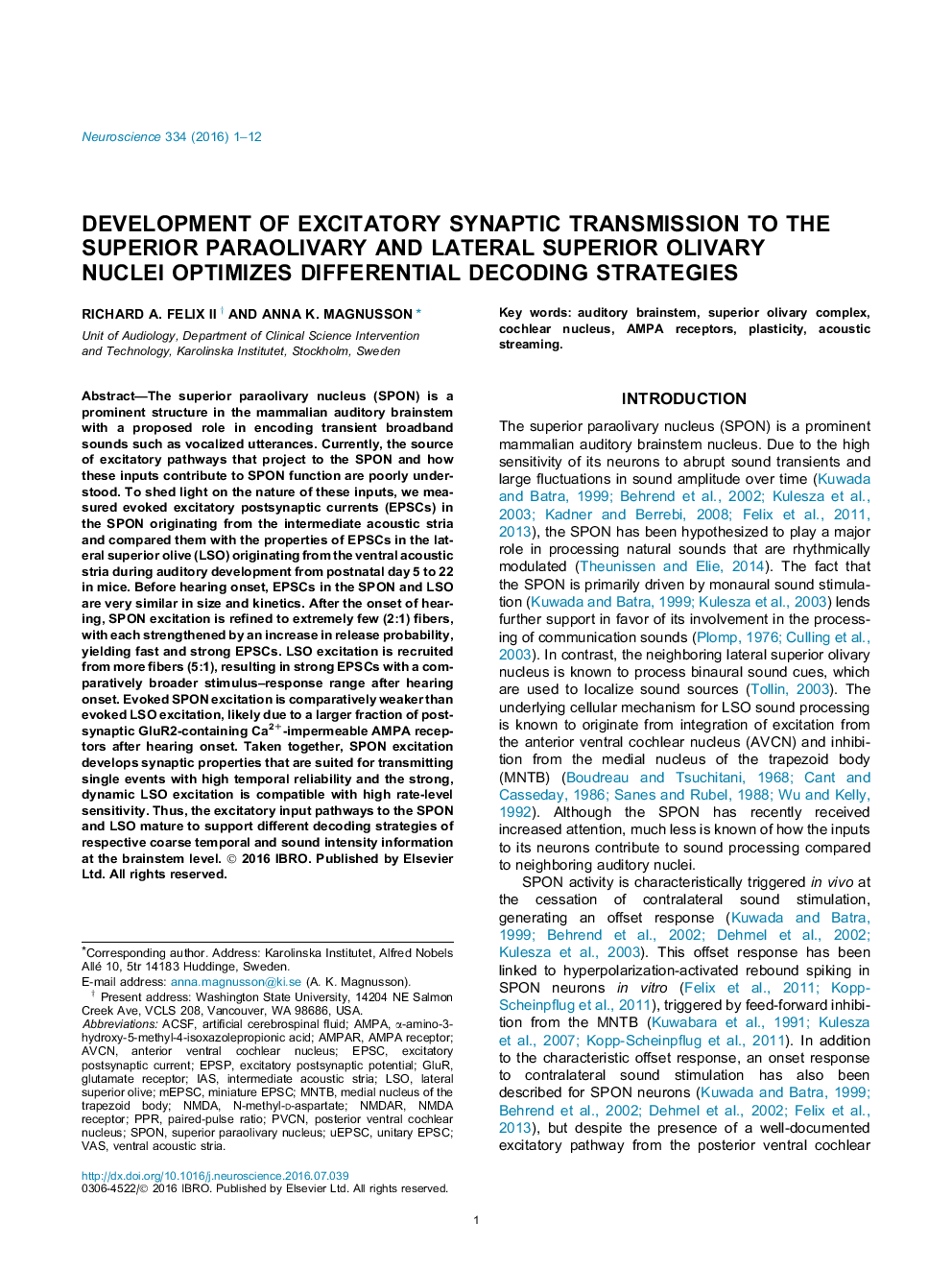| کد مقاله | کد نشریه | سال انتشار | مقاله انگلیسی | نسخه تمام متن |
|---|---|---|---|---|
| 6270792 | 1614742 | 2016 | 12 صفحه PDF | دانلود رایگان |
- The efficacy of excitation is developmentally strengthened in the SPON and LSO.
- High release probability gives rise to reliable excitation in the SPON.
- Broad stimulus-response output enables fast and flexible excitation in the LSO.
- These respective properties preserve coarse temporal and sound level information.
- This provides insight into the mammalian streaming of the acoustic cues.
The superior paraolivary nucleus (SPON) is a prominent structure in the mammalian auditory brainstem with a proposed role in encoding transient broadband sounds such as vocalized utterances. Currently, the source of excitatory pathways that project to the SPON and how these inputs contribute to SPON function are poorly understood. To shed light on the nature of these inputs, we measured evoked excitatory postsynaptic currents (EPSCs) in the SPON originating from the intermediate acoustic stria and compared them with the properties of EPSCs in the lateral superior olive (LSO) originating from the ventral acoustic stria during auditory development from postnatal day 5 to 22 in mice. Before hearing onset, EPSCs in the SPON and LSO are very similar in size and kinetics. After the onset of hearing, SPON excitation is refined to extremely few (2:1) fibers, with each strengthened by an increase in release probability, yielding fast and strong EPSCs. LSO excitation is recruited from more fibers (5:1), resulting in strong EPSCs with a comparatively broader stimulus-response range after hearing onset. Evoked SPON excitation is comparatively weaker than evoked LSO excitation, likely due to a larger fraction of postsynaptic GluR2-containing Ca2+-impermeable AMPA receptors after hearing onset. Taken together, SPON excitation develops synaptic properties that are suited for transmitting single events with high temporal reliability and the strong, dynamic LSO excitation is compatible with high rate-level sensitivity. Thus, the excitatory input pathways to the SPON and LSO mature to support different decoding strategies of respective coarse temporal and sound intensity information at the brainstem level.
Journal: Neuroscience - Volume 334, 15 October 2016, Pages 1-12
